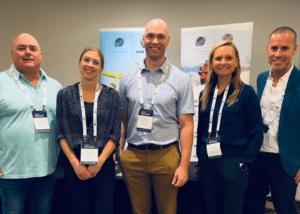Does HOP improve engagement in safety?
A central focus of Human & Organisational Performance is improving engagement with frontline workers. Imagine a workforce that asks to be involved in the process of safety improvement! Here’s how it happens with HOP.
Keeping the workforce engaged with safety is one of the greatest challenges for safety professionals. Checklists, policies, procedures, manuals, codes of practice, regulations and legislation are all vitally important to the safety framework. Still, they rarely invoke a sense of collaboration, innovation or allow for variability.
These are the ‘rules’ of safety that have driven the compliance-based approach to safety for decades. Follow the rules, or be punished. Follow the rules, or an accident will occur.
Mistakes do happen
Within the new view of safety, we know that mistakes happen. That the rules will sometimes get broken. We also know that those rules are designed by people who don’t usually do the work. To that end, they can often be impractical to those who do the work.
When safety is perceived as a one-way street, it’s no wonder the engagement challenge exists. Every new memo, program, poster or meeting adds to the safety noise.
At its core, HOP is a key driver of engagement with frontline workers. HOP acknowledges – first and foremost – that frontline workers are the experts in how work gets done. These same frontline workers, therefore, hold the most valuable insights into how it could be improved.
Shift the focus.
We must focus on understanding why things go right instead of minimising errors or avoiding things going wrong. As a result, the door for broader engagement and participation in organisational resilience is open.
Rather than undergoing a lengthy investigation or submitting a form that ends up at the bottom of a pile, what if a worker who has been involved in an incident is given the opportunity to be responsible for instigating an improvement to the process or task?
HOP enables a sense of ownership to emerge and take hold within an organisation. Operational learning tools such as Field Insights and Learning Teams can be used to engage workers at the coal face. Alternately, in facilitated conversations that dive into the context and conditions of everyday operations. These platforms allow workers to be heard, understood and included. This, in turn, encourages sharing stories and experiences to understand and improve – not blaming or punishment.
Want better answers?
When we consider what it means to have a workforce engaged in safety, we think of workers first understanding, then applying, and finally promoting, the approach to safety.
While every organisation would like to think this is happening at every level, often, that’s not the case. While safety is a priority for workers in high-risk environments, adapting to the constraints and conditions of everyday work will almost always take priority over following the rule book.
With HOP, the aim is to find the reasons why these deviations and variations occur and how the innovative and adaptive actions taken to maintain normal operations can help build more resilient systems.
So, how do you extract this valuable information from workers without fear of repercussion?
Ask better questions
Rather than asking a worker if they used a tool correctly, the HOP approach is to ask, ‘Do you have the right tools?’
Opening this dialogue immediately invokes a sense of collaboration and engagement by ensuring the worker feels heard, understood and included, and will inevitably provide more valuable information about adequate resourcing.
Becoming a Learning Organisation
HOP creates an environment where workers are seen as the experts in the work that they perform. Within HOP, frontline workers are invited to collaborate with management to make work better – using their expertise and knowledge of tasks to suggest improvements or create innovative solutions, essentially flipping the traditional model on its head.
Learning Teams are one of the tools used by organisations adopting HOP to understand how work is really done, with a view to improving it. These informal, facilitated conversations allow field experts to share their insights, experiences and stories about their work – providing context-rich information on how they navigate everyday operations and adapt to the ever-changing demands and conditions in their working environment.
During a Learning Team, the Facilitator’s role is to listen without judgement, ensuring the psychological safety of the group and allowing all to share openly and honestly. Supervisors and managers are usually not involved at the conversation level – further preventing any fear of repercussion. This also allows for the topics raised to be de-identified before they are shared with management.
Overall, Learning Teams enable better comprehension of problems to allow for more informed decision making, and in many cases, the most effective solutions are developed by the workers themselves. This is why organisations that run Learning Teams are often inundated with requests for frontline workers to be involved.
How many other safety functions or programs have a wait list to join?








